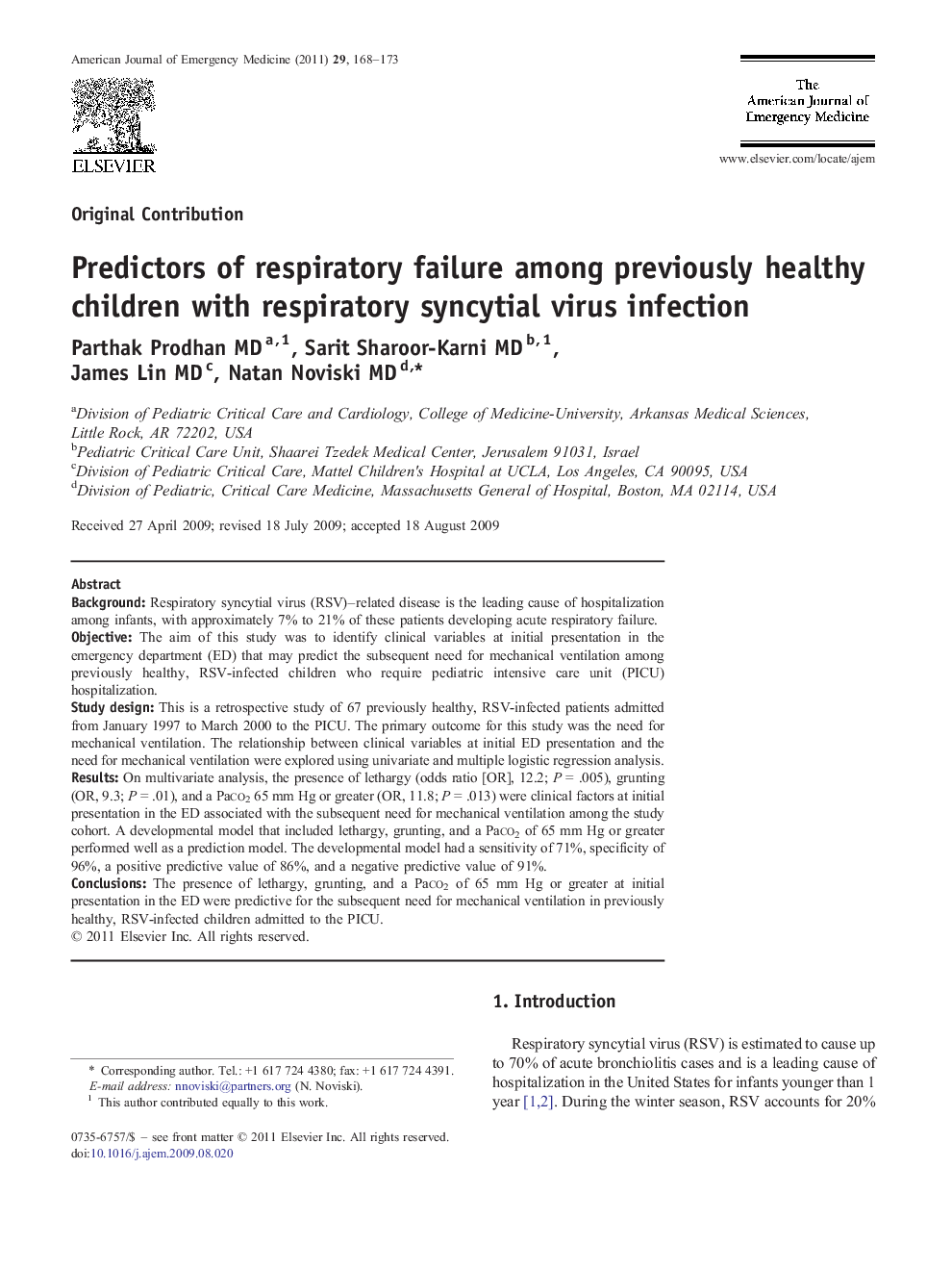| Article ID | Journal | Published Year | Pages | File Type |
|---|---|---|---|---|
| 3226326 | The American Journal of Emergency Medicine | 2011 | 6 Pages |
BackgroundRespiratory syncytial virus (RSV)–related disease is the leading cause of hospitalization among infants, with approximately 7% to 21% of these patients developing acute respiratory failure.ObjectiveThe aim of this study was to identify clinical variables at initial presentation in the emergency department (ED) that may predict the subsequent need for mechanical ventilation among previously healthy, RSV-infected children who require pediatric intensive care unit (PICU) hospitalization.Study designThis is a retrospective study of 67 previously healthy, RSV-infected patients admitted from January 1997 to March 2000 to the PICU. The primary outcome for this study was the need for mechanical ventilation. The relationship between clinical variables at initial ED presentation and the need for mechanical ventilation were explored using univariate and multiple logistic regression analysis.ResultsOn multivariate analysis, the presence of lethargy (odds ratio [OR], 12.2; P = .005), grunting (OR, 9.3; P = .01), and a Paco2 65 mm Hg or greater (OR, 11.8; P = .013) were clinical factors at initial presentation in the ED associated with the subsequent need for mechanical ventilation among the study cohort. A developmental model that included lethargy, grunting, and a Paco2 of 65 mm Hg or greater performed well as a prediction model. The developmental model had a sensitivity of 71%, specificity of 96%, a positive predictive value of 86%, and a negative predictive value of 91%.ConclusionsThe presence of lethargy, grunting, and a Paco2 of 65 mm Hg or greater at initial presentation in the ED were predictive for the subsequent need for mechanical ventilation in previously healthy, RSV-infected children admitted to the PICU.
